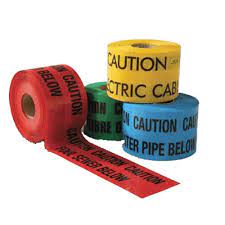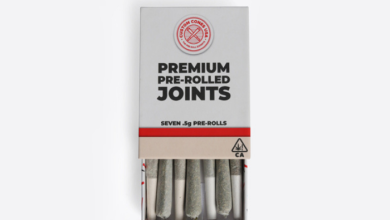
The use of warning tapes is when health and safety issues are identified but are not immediately apparent to anyone who might approach the area. The use of warning tape is in conjunction with warning signs that highlight the danger and any necessary protective measures.
Underground Warning Tape Use and Types
The use of warning tapes is when health and safety issues are identified but are not immediately apparent to anyone who might approach the area. Warning tape is typically used in conjunction with warning signs that highlight the danger and any necessary protective measures.
Subsurface Alert:
We use tape as a physical and visual barrier, to alert and prevent entry to a worksite, You should be familiar with all of the different types of warning tape that exist. Tape indicates Warning or Caution in yellow: Minor health and safety issues in the area. These include loud noises, heavy machinery operating, a crowded work area, exposed hoses or wires, and other elements. The yellow tape may indicate, “Welcome,” but proceed with caution, unless otherwise stated.
The danger tape in red means:
The region poses an immediate or high-growth threat to public health. Other hazards include overhead work, dangling loads, open pits, excessive noise transmission, overhead loads, the need for fall protection, and entrance restrictions to restricted spaces. must enter only with permission from the relevant commanding supervisor.
The following are the principles and best practices for using any warning tape:
Although it blocks a region, a professional or trained person should place the tape and issue a warning before doing so, unless a crisis or job order requires it.
Use sturdy barrier tape.
- Any danger should be immediately discernible from the tape’s repeated text.
- You should be able to move the ribbon as the job site changes if it is recyclable.
- Use tape to mark off restricted areas.
All warning tape must include (within or on the tape) at least one of the following details:
Realizing the threat
- Communications Hub
- Mobile Number
- Never take down barricade tape unless you have been given permission to.
Replace an outdated tape right away.
- Avoid tampering with the tape.
- Replace the tape right away if it is torn or damaged with new tape.
- Simply eliminate and remove the tape from the area once the risk or task has been removed to prevent any errors.
When Should Warning Tape Be Used?
- Use tape to mark construction sites, risky areas, boundaries, and the location of excavation activity.
- Use tape to mark off work areas, hazardous construction zones, boundaries, and the presence of excavation activity.
- Hang warning tape from pipes that are overhead that you could hit with your head.
- If it can support pounds, warning tape may be used for an access control line.
At what depth should electrical underground warning tape be buried?
Improve the recognition and awareness with a wider tape. Underground Warning Tape: utility installations are to protect, locate, and identify using non-detectable warning tape.
Alert tape (Red vs. Yellow)
Construction equipment:
Such as cranes, aerial workstations, and lorries, which account for 75% of collision-related fatalities.Warning Although interactions with objects are one of the top three causes of death and disability for all workers, those in the trades that manufacture tape are the most at risk (Falls, Struck-By, and Caught-Between). These incidents resulted in 721 occupational deaths in 2016, or two deaths on average per day, and over 232,500 injuries that required days away from work. We can reduce The number of injuries and fatalities with the aid of barricades.
On construction sites:
Various kinds of barricades are in use. To alert staff, other subcontractors and the general public to potential hazards on the project site, tape, signs, machine barriers, and barricades are in use. Within each goal and level of security, there are various barriers and warning systems. On construction sites, red and yellow tape barriers warn people to avoid potentially hazardous areas such as cranes and the swinging area of aerial lifts. Barricades are more than just theoretical concepts in the construction industry; they exist to keep all workers and members of the public safety and to save lives.
Subsurface Alert A:
Red tape indicates safety or health concerns in the area. No one should ever enter the premises until permission. The most common color of warning tape, yellow, indicates that there are only minor health and safety risks in the vicinity. This could include, among other things, noisy environments with decibel levels above 85, the use of numerous pieces of heavy machinery, or a crowded workspace.
At every potential entry point, the red and yellow tape needs to have information describing the dangers there.




